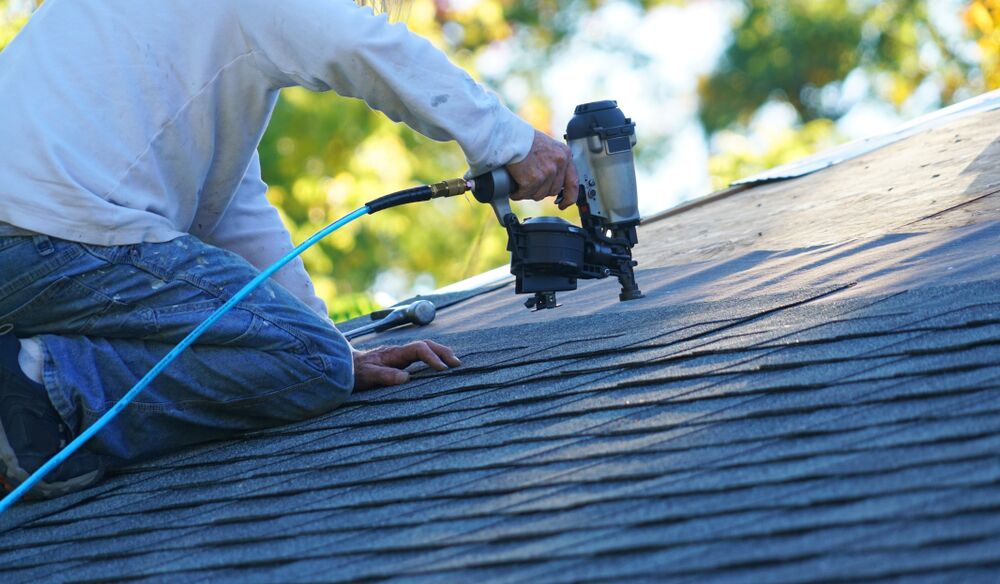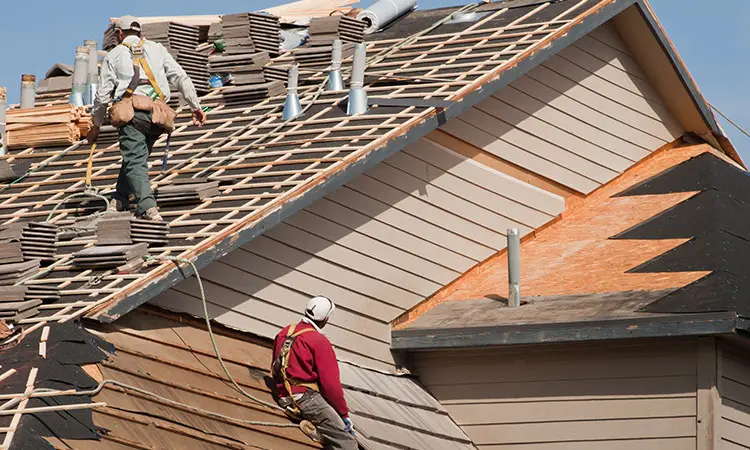Recognizing the Various Sorts Of Roofing Systems: A Comprehensive Guide for Homeowners
In the realm of homeownership, choosing the proper roof covering design is a choice that lugs considerable effects for both functionality and aesthetic allure. With a range of options-- ranging from the conventional gable to the contemporary flat-- each type presents unique advantages and challenges that should align with the property owner's particular needs and environmental considerations. Comprehending these distinctions not only help in making an enlightened selection however likewise influences long-term upkeep and power effectiveness. As we check out the complexities of various roof covering kinds, it ends up being apparent that one dimension does not fit all; the ideal option may shock you.
Saddleback Roof
Gable roofs, identified by their triangular shape, are amongst the most prominent roofing styles as a result of their simplicity and effectiveness in losing water and snow. This design includes two sloping sides that satisfy at a ridge, enabling effective water drainage and reducing the threat of water accumulation. The high pitch commonly connected with gable roofs improves their capacity to handle heavy rainfall, making them ideal for various climates.
Along with their practical benefits, gable roofings offer aesthetic adaptability. They can be adjusted to various architectural styles, from standard to modern-day homes. The design can also fit added attributes such as dormer windows, which enhance natural light and ventilation in the attic room room.
In addition, gable roofings provide enough area for insulation, adding to power performance. Homeowners can select from a range of roof products, consisting of asphalt roof shingles, steel, and floor tiles, better boosting modification alternatives.
Despite their benefits, gable roofs may require additional assistance in locations vulnerable to high winds or hefty snowfall. Generally, the saddleback roof continues to be a popular selection because of its blend of performance, toughness, and aesthetic charm.
Flat Roofs
Flat roofs are often recognized for their minimal layout and practical applications, particularly in business and industrial settings (oahu roofing). These roofs feature a virtually straight or horizontal surface, which permits very easy building and construction and functional space use. While they may do not have the aesthetic allure of pitched roofings, level roofing systems offer numerous advantages, specifically in urban settings where making best use of space is important
One of the main advantages of level roof coverings is their access. Home owners can make use of the roof covering area for various purposes, such as rooftop gardens, terraces, or photovoltaic panel installations. Additionally, level roofs are usually extra affordable to maintain and mount contrasted to their sloped equivalents, as they require fewer products and labor.
However, flat roofs do present particular challenges. Proper drain is important to prevent water pooling, which can result in leakages and architectural damage. Hence, choosing top notch waterproofing materials and routine inspections are crucial for making certain durability. Common materials used for level roofing systems consist of built-up roof covering (BUR), modified asphalt, and single-ply membrane layers, each offering distinctive benefits. In general, level roof coverings act as a functional and versatile selection for numerous property owners and companies alike.
Hip Roof Coverings
Hip roof coverings are defined by their sloped sides that assemble on top, forming a ridge. This style is distinctive from gable roofings, as all four sides of a hip roof covering slope downwards towards the walls, offering a more stable framework. The angle of the slopes can differ, enabling versatility in building visual appeals and functionality.
Among the primary advantages of hip roofings is their ability to withstand hefty winds and unfavorable weather. The sloped surface areas enable far better water drainage, decreasing the risk of leaks and water damages. In addition, hip roofing systems use additional resources enhanced attic room space, which can be utilized for storage and even transformed right into comfortable locations.
However, creating a hip roofing can be a lot more intricate and costly than simpler roof kinds, such as saddleback roofs. The extra product and labor involved in producing the inclines and making sure appropriate structural stability can result in greater expenses. In spite of these downsides, several house owners prefer hip roof coverings for their sturdiness, aesthetic charm, and possibility for power efficiency.
Mansard Roofs
Mansard roofings, usually acknowledged by their unique four-sided design, feature two inclines on each side, with the reduced slope being steeper than the upper. This building design, originating from France in the 17th century, is not just aesthetically attractive but useful, as it makes best use of the usable room in the top floorings of a structure. The high reduced incline enables even more clearance, making it a suitable choice for attic rooms or loft spaces, which can be transformed right into living areas.
Mansard roofs are defined by their versatility, suiting numerous building styles, from traditional to modern-day. They can be created with different materials, including asphalt tiles, continue reading this slate, or steel, offering house owners with a series of alternatives to suit their preferences and budgets. Furthermore, the style enables for the combination of dormer windows, improving natural light and ventilation in the top degrees.
Nonetheless, it is necessary to take into consideration the possible downsides. Mansard roofings may require more upkeep as a result of the complexity of their design, and their steep inclines can be testing for snow and rain runoff. Overall, mansard roof coverings incorporate sophistication with functionality, making them a popular selection amongst property owners looking for distinct architectural features.
Lost Roofings
As house owners significantly look for simplicity and capability in their architectural designs, lost roofings have arised as a prominent choice. Identified by a solitary sloping plane, a shed roof covering provides a minimalist visual that complements numerous home styles, from modern to rustic.
Among the main benefits of a shed roofing system is its uncomplicated construction, which commonly translates to reduce labor and product costs. This style permits for efficient water drainage, minimizing the risk of leaks and water damage. In addition, the vertical slope supplies enough space for skylights, improving all-natural light within the inside.
Shed roofing systems additionally supply flexibility in terms of usage. They can be properly incorporated into additions, garages, or outside frameworks like structures and sheds. Furthermore, this roofing system style can fit numerous roof covering products, including metal, asphalt shingles, and even eco-friendly roofings, lining up with eco-friendly campaigns.
Nonetheless, it is necessary to think about regional climate conditions, as hefty snow loads might necessitate modifications to the roof covering's angle or framework. Overall, lost roofing systems provide a functional and aesthetically pleasing option for house owners aiming to make the most of performance without endangering style.
Final Thought


Gable roof coverings, defined by their triangular form, are among the most preferred roof designs due to their simpleness and efficiency in losing water and snow. oahu roofing. The high pitch generally linked with gable roofings improves their capability to manage heavy rainfall, making them appropriate for various environments
While they might do not have the visual charm of pitched roofings, level roofings offer many benefits, particularly look at this now in urban settings where making the most of space is essential.
